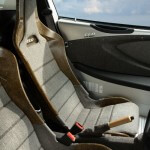Hemp Cars Are The Future
1People are starting to realize that hemp cars are going to be a wave of the future. It may be hard to imagine a car manufactured from grass, as it may seem to lack the sturdy component needed for a functional car. However, scientists claim that cars made from plants are actually an upcoming trend. Researchers in England and Australia are working towards developing materials made from plants such as elephant grass and hemp that are to replace different car components made from metal and plastic. According to these scientists, the plant-based car materials are not only biodegradable, but can also enhance fuel efficiency, as they weigh nearly 30% less than the materials that are currently used in making car components. A lighter car generally needs less fuel to drive it.
Industrial hemp for car construction
Building car components including the outer shell using hemp could lower the ever increasing number of rusting car body parts from old lots. Hemp fibers are thoroughly cleaned then heated and sometimes blended with a few biodegradable plastic to increase their overall strength. They are then molded to form hardened filling and paneling. Hemp is also considered to be significantly cheaper to produce when compared to the manufacture of other materials such as steel.
Henry Ford’s Hemp Car
In the 1910s, Henry Ford tried experimenting with using agricultural products in the manufacture of his automobiles. In 1941, he came up with a solution and built a car that contained cellulose fibers derived from hemp, sisal, and wheat straw. The plastic was said to be lighter than steel and 10 times stronger than steel! Watch the video as Ford demonstrated its strength by attacking it with an axe.
Later that same year, the plastic car had been scrapped. The reason for this is not entirely certain, but sources say that it was because car manufacturing had stopped during WWII, and all energy was diverted to war recovery efforts.
Kerstel Car

Kerstel Car by Motive
Kestrel is expected to be warmer, quieter, and without any smell. According to Armstrong, the vibrations produced by natural fibers are quite pleasant. He also deems the car safer in the event of a crash, since it springs or bounces back rather than squishing or crumbling. However, Motive cannot confidently state the wear and tear effects of the car in the long run because of the novelty of the car’s technology. Nonetheless, their aim is to create a durable car that is also easy to repair.
Eco Elise, Lotus Hemp Car
 Yup, we saved the best one for last. In 2008, Lotus announced its eco-friendly car made out of hemp. The Eco Elise weighs 32 kg (70.5 lbs) less than the standard Elise S, which means it will give higher fuel economy figures and better performance. The green materials used for the car have been carefully studied to ensure that each technology used reduces the environmental impact of the vehicle.
Yup, we saved the best one for last. In 2008, Lotus announced its eco-friendly car made out of hemp. The Eco Elise weighs 32 kg (70.5 lbs) less than the standard Elise S, which means it will give higher fuel economy figures and better performance. The green materials used for the car have been carefully studied to ensure that each technology used reduces the environmental impact of the vehicle.
Mike Kimberley, CEO of Group Lotus plc commented “This Eco Elise is a great example of the advanced and affordable green technologies Lotus is developing. We are at the cutting edge of environmental technology and are determined to push forward with our green agenda. The Lotus brand values of lightweight, fuel efficient, and high performance are more relevant today than they ever have been. We are keen to ensure that Lotus as a company and its products offer an ethical, green option that appeals to our customers.”
Today’s green car focuses on how little gas they consume, but the Lotus goes much further than this. Even the company’s main plant has been overhauled in the name of efficiency and eco-friendliness, with vast reductions in water (11%), electricity (14%), and gas (30%) usage — and nearly 60% of all the waste from their manufacturing processes is now recycled.
Read their press release, the Lotus Eco Elise in more detail here.





 Dr. Bronner's Magic Soaps Pure-Castile Soap
Dr. Bronner's Magic Soaps Pure-Castile Soap Nutiva Organic Hemp Protein
Nutiva Organic Hemp Protein
The Allure of Vintage Ford Cars Ford vehicles have always been synonymous with American pride and tradition. One of the biggest vehicle manufacturers today.
Vintage Ford Cars